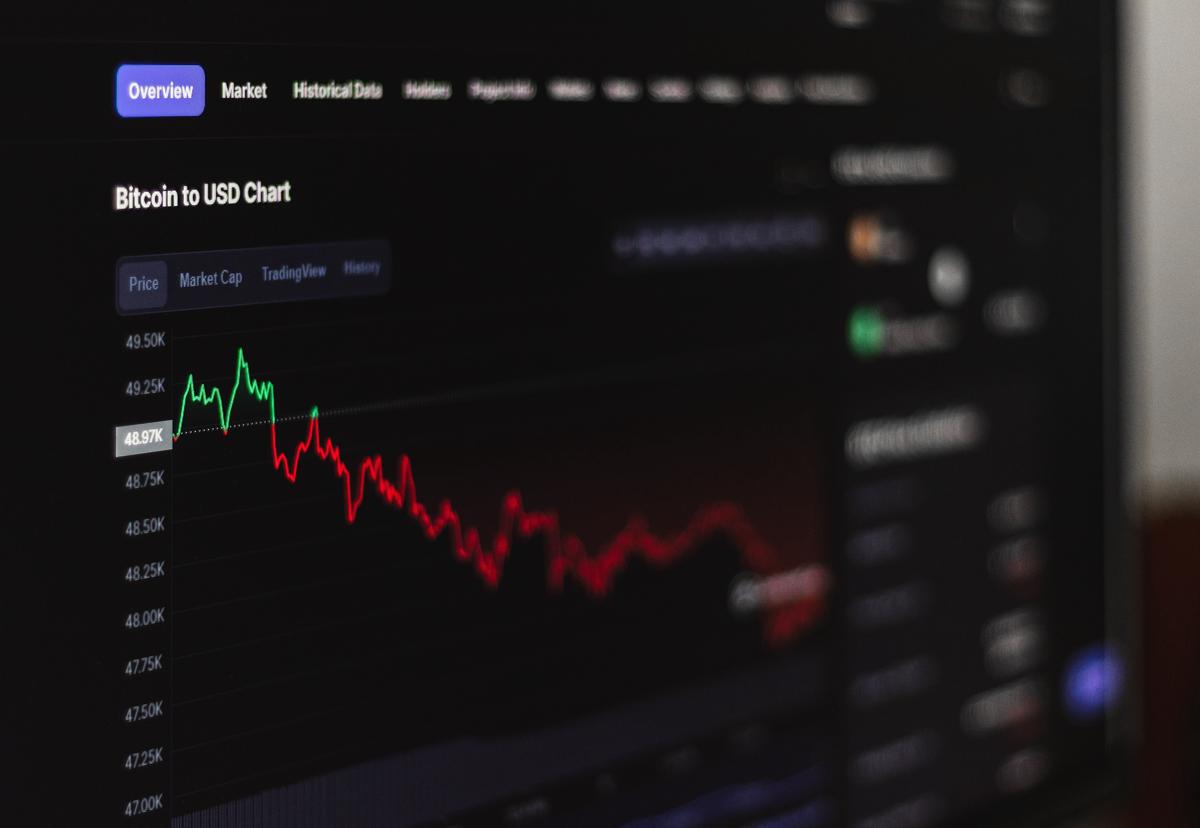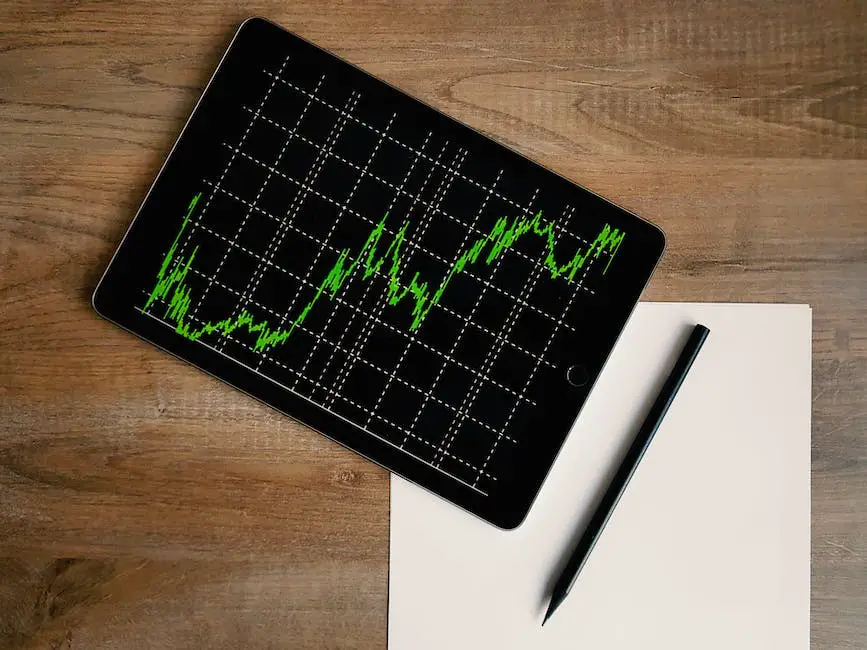Deciphering the complex world of financial markets can seem like a daunting task for beginners. However, this understanding is crucial to making informed investing decisions. One of the most effective ways to gain adequate financial literacy is by learning to read and interpret stock charts. These graphical presentations offer an abundance of information about a stock’s past and current performance, allowing investors to spot trends, patterns, and potential opportunities. In this informative guide, we delve into the world of stock charts, breaking down their various components, explaining the significance of trend lines and moving averages, and ultimately unraveling the mystery of technical indicators.
Understanding Basic Stock Chart Components
Understanding Basic Stock Chart Components
Reading a stock chart might initially seem intimidating, but with a bit of knowledge about its basic components, it can significantly enhance your understanding of the stock market. These components include price, volume, time axis, price axis, and chart type.
Price and Volume
The two most fundamental aspects of a stock chart are price and volume. Price refers to the cost of a single share of a stock at any given time, and volume refers to the number of shares that change hands during a specific period.
On a chart, the price is usually displayed on the vertical or y-axis, while the horizontal or x-axis represents the time period. The volume is often represented by bars at the bottom of the chart, with the height of each bar showing the volume of trades for that time period.
Time Axis and Price Axis
The time axis of a stock chart is usually found at the bottom. It will show the selected timeframe for your analysis such as one day, one month, one year, or even several years. The price axis, on the other hand, is located on the right side of the chart. It indicates the stock’s price changes during the selected time period.
Chart Types
There are several types of stock charts, but one of the most commonly used by traders is the candlestick chart. It’s favored for its visual representation of price movements.
Interpreting Candlestick Charts
Candlestick charts originated in Japan over 100 years ago and are named for the unique ‘candle-like’ appearance of their indicators. Each ‘candlestick’ represents a specific timeframe (a day, an hour, a month, etc.) and shows the opening, high, low, and closing prices for that period.
Here’s how to read a candlestick:
- The ‘body’ of the candlestick represents the opening and closing prices. If the body is filled (usually colored), it means the opening was higher than the closing—indicating a price drop. An unfilled (often white or clear) body represents a price increase, with the opening at the bottom and closing at the top.
- The ‘wick’ or ‘shadow’ represents the high and low prices during the time period. A line above the body is the ‘upper shadow’ and shows the highest price, and the line below the body is the ‘lower shadow’ and shows the lowest price.
- If a candlestick body is long, it means there was a significant price move from open to close, regardless of the color of the body. Short bodies suggest little price movement and are often interpreted as consolidation periods.
By learning to interpret these candlestick patterns, you can start to predict potential market trends and make informed decisions about when to invest and trade in the stock market. Practice is key—so start analyzing some stock charts today.

Photo by behy_studio on Unsplash
Studying Trend Lines and Moving Averages
Understanding Stock Charts: Studying Trend Lines
Trend lines are an essential tool in technical analysis for both trend identification and confirmation. Essentially, a trend line is a straight line that connects two or more price points, then extends into the future to act as a line of support or resistance. The trend can be upward (bullish pattern) or downward (bearish pattern).
To draw trend lines, follow these steps:
- Identify Clear Trends: Look at the chart and identify if its trend is upwards, downwards, or sideways. This is essential to properly draw a trend line.
- Find two or more Highs or Lows: You need at least two highs (or lows) to draw a valid trend line but three or more make it even more robust.
- Draw the Line: Once you have identified the highs or lows, use a charting tool to draw a straight line that connects these points. If you are identifying an upward trend, draw your line below the rising lows. If you have a downward trend, connect the line above the falling highs.
Remember, trend lines become more important the more they are tested – meaning the more times the price bounce off the line.
Mastering Moving Averages: Recognizing Long-Term Trends
Aside from trend lines, another important tool you can use when reading stock charts is moving averages. A moving average calculates the average price of a security over a specific number of periods. This smooths out price data, thereby filtering out the noise from random price fluctuations, and makes it easier to identify the direction of the trend.
Here is how you can calculate and use moving averages:
- Choose a Time Frame: Decide on the number of periods to include in your average. The most commonly used are 50-day and 200-day moving averages.
- Calculate Average: Add up the closing prices for the chosen number of periods and then divide by the number of periods.
- Plot the Results: Once you have the average, plot this number on a chart. The line that forms from the plotted results is your moving average.
- Analyze the Moving Average Trend: If the moving average line is rising, the trend is up, and if it’s falling, the trend is down.
- Look for Crossovers: When a short-term moving average crosses above a longer-term moving average, it may signal that the trend is changing. This is commonly known as a bullish crossover. Conversely, when a short-term moving average goes under the longer-term average, it suggests a bearish signal.
Proper use of trend lines and moving averages can provide a simple yet valuable toolset for identifying and confirming trends, an essential part of making informed trading decisions.

Mastering Technical Indicators
Understanding the Basics of Stock Charts
Before diving into technical indicators, you must understand what a stock chart is. A stock chart represents a company’s share price over time. It assists traders and investors in making buying or selling decisions by analyzing patterns and trends.
Reading Stock Charts
When looking at a stock’s price chart, there are some key aspects to consider. First, look at the general trend. Is the stock price going up, down or staying flat? This can be established by drawing a trend line. Second, identify any patterns or significant price levels which repeatedly act as support or resistance. Lastly, pay attention to the volume of shares traded, as a high volume indicates high interest, which can emphasize a price movement’s importance.
Introduction to Technical Indicators
Technical indicators are tools that traders use to forecast future price movements. They are typically used alongside price charts to confirm price movements and predict more accurately future turn around points in price. Below, you’ll find explanations of three commonly used indicators: RSI, MACD, and Bollinger Bands.
Understanding the Relative Strength Index (RSI)
The Relative Strength Index (RSI) measures the speed and change of price movements and is often used to identify overbought or oversold conditions in a market. When the RSI is above 70, a stock may be considered overbought as the price has been increasing rapidly and might soon reverse. Similarly, if RSI is below 30, the stock could be undervalued and the price might increase.
Mastering the Moving Average Convergence Divergence (MACD)
The Moving Average Convergence Divergence (MACD) is used to identify potential buy and sell signals. The MACD includes two lines: the MACD line (fast line) and the signal line (slow line). When the MACD line crosses above the signal line, it generates a bullish signal (buy), while a bearish signal (sell) is interpreted when the MACD line crosses below the signal line.
Comprehending Bollinger Bands
Bollinger Bands make use of a simple moving average and standard deviation lines. The standard deviation measures the amount of variability or dispersion around an average. The middle line represents the moving average of a stock. Two outer bands, located two standard deviations above and below the middle line, indicate volatility. When the price of stock touches or moves outside one of the bands, it could signify that the stock is oversold or overbought.
Understanding and interpreting these indicators can take some practice.
Apply this knowledge to real-time charts and you’ll soon get used to spotting potential trading opportunities. Always remember to consider multiple aspects before making decisions, as no technical indicator is accurate 100% of the time. It’s most beneficial when used in conjunction with other technical analysis tools.

With the foundation laid in understanding components of stock charts, the art of drawing trend lines, interpreting moving averages, and mastering technical indicators, you are now armed with the basic tools needed to venture into the world of stock market analysis. Remember, technical analysis is part science, part art. It takes time and practice to develop proficiency. Start slow, stay patient, and persistently apply these concepts to real-world scenarios. Over time, reading stock charts becomes less of a puzzle and more of a valuable skill, helping to guide your trading and investment decisions wisely.


